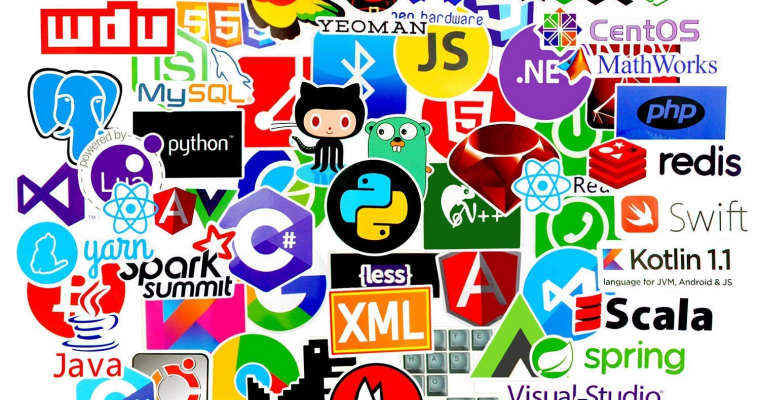Low-code and no-code platforms are making it easier for anyone to create AI applications. These platforms provide simple visual tools that people can use to build apps without needing to know how to code. Users can just drag, drop, and connect building blocks to make an app. This means companies can allow employees with all different backgrounds to make AI apps for their business needs.
What are Low-Code and No-Code Platforms?
Low-code and no-code platforms provide easy-to-use tools for creating applications. They allow those without coding skills to build apps using simple visual interfaces and pre-made components that require little technical knowledge. Low-code platforms still involve some coding, while no-code platforms use fully visual, drag-and-drop building blocks.

For example, someone without coding skills could make an AI chatbot to answer customer questions. Or they could make an app to predict future sales. Low-code and no-code platforms open up AI superpowers to lots more people. This lets businesses try out new AI ideas faster and get more benefits from AI technology. It’s a big change that is making AI app development more accessible than ever.
Benefits for AI Application Development
These platforms make it much easier for non-programmers to develop AI applications. Some key advantages include:
– Faster prototyping – Apps can be built extremely quickly without needing to manually code complex AI algorithms. New ideas can be easily tested.
– Agility – AI apps often require rapid adjustments based on user feedback. Visual workflow interfaces simplify iterative improvements.
– Accessibility – Enables less technical “citizen developers” to innovate with AI across business functions where coding skills may be scarce.
– Scalability – Low-code/no-code apps can be conveniently deployed across devices and teams, maximizing AI’s benefits.
As Kyle Tuberson, CTO of global consultancy ICF, explains:
“One of the main benefits is that businesses can easily solve problems like automation and improving customer/employee experiences by enabling citizen developers to use these platforms to address real-world needs without IT support.” By empowering non-technical users to meet business demands with AI, they foster innovation and productivity.
Additionally, “these platforms often utilize a drag-and-drop editor with little to no coding, so developers can seamlessly integrate pre-built AI models into applications.” Their simplicity makes them ideal “one-stop shops” for injecting AI into workflows.
Furthermore, vendors are continuously adding more embedded AI capabilities into the platforms themselves. So everything is conveniently packaged together.
These platforms also excel at developing solutions to optimize AI-driven workflows. As Tuberson sums up: “Overall, these platforms enable the integration of AI applications into existing workflows in a fraction of the time compared to custom solutions.” Their speed and pragmatism deliver major dividends.
By democratizing AI development and facilitating integrations, low-code/no-code delivers automation, efficiency and competitive advantage to those leveraging it. The abilities of non-technical users to address needs quickly multiplies the power of AI organization-wide.
Driving Factors Behind Low-Code/No-Code AI Development
According to Andrew Manby, Vice President of Product Management at HCL Software, the growing use of low-code/no-code platforms for building AI applications can be attributed to a few key factors:
One major driver is that “demand for AI-driven solutions has skyrocketed, prompting organizations to seek efficient ways to capitalize on this trend.” Low-code and no-code tools provide a practical way to harness AI by lowering barriers to entry and speeding up app development. As Manby explains, these platforms “offer a viable solution by reducing barriers to entry and expediting the development process.”
Additionally, “the ongoing digital transformation across industries has led to a scarcity of skilled developers, making it challenging for organizations to meet their AI development needs.” Manby elaborates that “low-code and no-code platforms help bridge this talent gap by enabling citizen developers to contribute to the development process, thus alleviating the pressure on IT departments.”
Finally, Manby notes that “the iterative nature of AI development, which often requires frequent adjustments and fine-tuning, makes low-code and no-code platforms particularly appealing.” These platforms are well-suited for this style of development since they “facilitate rapid prototyping and deployment, allowing organizations to quickly adapt their AI applications to changing requirements and market conditions.”
In summary, surging demand for AI, developer talent shortages, and the need for rapid iteration and adaptation are major reasons low-code/no-code platforms are being widely leveraged to build AI capabilities across organizations. By empowering citizen developers and accelerating development, they provide essential agility.
The AI Revolution Drives Low-Code/No-Code Adoption
According to Matthew Scullion, CEO and Co-Founder of data productivity platform Matillion, “there’s the fact that AI, generative AI, and large language models have created a revolution in the way that individuals work, live, and play.”
In light of this revolution, Scullion believes “businesses that want to remain relevant must quickly master these technologies to improve their own operations, their own products, and in some cases, to bring to market new products that will become the ‘picks and shovels’ of this new AI gold rush.” Moreover, “the reality is that companies that fail to do this will wither and die.”
However, as Scullion notes, “there is a dearth of the required skills, such as fine-tuning models, designing and populating vector databases, or training algorithms — these all require specialist skills that are in short supply.” As he comments, “It’s fine if you’re Netflix or Google because you’ll have the pick of the talent, but for the company that will otherwise be disrupted and isn’t a Silicon Valley FANG [Facebook (Meta), Amazon, Netflix, and Google (Alphabet)], how do you compete?”
In light of these skill gaps, Scullion believes “low-code and no-code technologies that allow individuals, teams, and organizations to innovate with data with much higher levels of productivity and with different, more commonly available skill-sets are a material part of the answer.” As he elaborates, “These technologies allow each player on the pitch to achieve more while putting more players on the pitch (by making the game playable with a more commonly available set of skills).”
Therefore, low-code/no-code solutions are becoming essential for organizations across industries to harness the AI revolution, enabling innovation even without deep technical talent. As Puneet Kohli of Rocket Software agrees, these technologies are “revolutionizing AI app development, enabling rapid creation and innovation.”
Real-World AI Use Cases
Here are some real-world examples of AI applications created with low-code and no-code platforms:
Sentiment Analysis for Customer Feedback
A consumer goods company used a no-code AI platform to rapidly build a sentiment analysis model. This automatically classifies open-ended customer survey comments as positive, negative or neutral. It enables them to efficiently spot key trends and issues in thousands of responses each day.
Predictive Maintenance for Wind Turbines
A wind farm operator developed a wind turbine predictive maintenance app with a low-code platform. By analyzing sensor data, the AI application forecasts mechanical failures days or weeks in advance. This gives ample warning to proactively schedule repairs and minimize turbine downtime leading to revenue losses.
Intelligent Inventory Management
A national retailer created a smart inventory management tool with no-code AI technology. The application combines historic sales data, demand forecasting, and supply chain visibility to optimize stock levels. It automatically tracks inventory changes in real-time across 1000+ retail outlets and intelligently calculates ideal reorder points and quantities store-by-store.
Conversational Chatbots for Customer Service
A digital bank deployed an AI-powered chatbot built with low-code tools to manage 70% of incoming customer service inquiries. The natural language processing-enabled bot can understand questions, access account details, and handle common requests like checking balances or transaction lookups. This provides 24/7 automated self-service, freeing up human agents for more complex issues.
The Future of Democratized AI Innovation
Low-code/no-code solutions will expand access to AI, fueling transformation across industries. They empower organizations to rapidly deploy advanced AI capabilities to improve workflows, analytics, customer experiences and more. Companies that fail to leverage these accessible cloud-based platforms may end up losing competitive advantage to early adopters. The democratization of app development is unleashing new waves of data-driven innovation.
Getting Help Building Software
Creating software using low-code and no-code platforms takes some skill. Many companies work with development partners like eJaw to help build their apps and AI solutions.
eJaw has experts that guide companies at every step – from choosing the right platform to designing apps to integrating AI models to testing and launch. They make the process smooth so companies can focus on their business goals instead of technical details.
eJaw also follows best practices to make sure the software works well long-term as companies grow. This includes things like security, scalability to add more users, and ease of updating features.
In the end, partnering with eJaw lets companies bring their AI ideas to life much faster than trying to build it themselves. eJaw turns AI visions into real working software that creates value. Their end-to-end guidance saves time and delivers better results.
So for any company adopting low-code/no-code tools to develop AI applications, eJaw offers the skills and experience to make projects succeed. Their support unlocks the promise of AI through simple and smart software solutions.






